Have you ever heard the rats and the mice taking admission in school??
Shocking right? But yes, rats and mice do take admission in schools, not for the getting educated but to spread nuisance.
The schools have the responsibilities when it comes to the education of students but the schools are also responsible for protecting the health and safety of their students.
Rats and mice seek for food, warmth, water, shelter, and safety which they get in abundance from school.
Rodents can find many numbers of places to hide and to breed; it is always easy for rodents like rats and mice to infiltrate a school because even a small hole can make them enter.
Rats and mice can transmit a number of diseases through contact with them or consumption if the food that rodents have partially eaten, skin contact with rodent’s urine and their droppings can also cause diseases.
Schools should take the possibility of rodent infestation very seriously, especially in the month of winter. Rodents will be much more aggressive in colder seasons about seeking shelter.
The rodents can chew on anything that they see as useful in building their nests. This could be wood, paper, books, electrical appliances, etc. They can even make holes in furniture to stay to make a place to stay.
According to the news articles,
Rat infestation closes Congdon Park school
Updated: Jun 13, 2018, at 5:15 p.m. From the Duluth News Tribune.
A rat infestation has closed the eastern Duluth Congdon Park Elementary School and its grounds for the summer.
The rodents have been spotted entering the drainage system under the gym addition of the school. Hillside burrow entrances have also been found at the back of the building, according to the Duluth school district.
The closure will allow pest control and district staff to clear the area where the rats have been living and eating for some time, including inside the school’s composting bin.
“They enter into — I don’t want to call it a rat buffet — but they had plenty of food, shelter, and water and took up residence,” district facilities manager Dave Spooner said of the composting bin and the burrows.
No rats were found inside the school, he said, but the closure of the building and its grounds make it easier to solve the problem.
The infestation was discovered toward the end of the school year, and pest control workers began addressing it with traps inside lockboxes. So far, about five rats per day have been trapped. Pesticide bait boxes will be set near the drainage system and burrow entrances Friday. The method is compliant with Environmental Protection Agency and Minnesota Department of Health guidelines, district officials said.
Rat infestation forces closure of Duluth elementary school
Updated: June 14, 2018 — 5:00 AM. From Star Tribune
A colony of rats is wreaking havoc at Duluth’s Congdon Park Elementary, prompting district officials to close the school and its playground for the summer.
Since the unwelcome discovery, pest control workers have trapped about five rodents per day near the foundation and drainage system underneath the school gym, said district facilities manager Dave Spooner.
“We’re working to remove them before they can get into the building itself,” Spooner said in a prepared statement. “Having the building and grounds unoccupied will allow us the flexibility to take steps necessary to make that happen.”
The school is located at 3116 E. Superior St., not far from Glensheen mansion.
Food sources that might attract the vermin have been removed.
The school’s composting bin likely played a role. “They enter into — I don’t want to call it a rat buffet — but they had plenty of food, shelter, and water and took up residence,” Spooner told the Duluth News Tribune.
Pesticide bait boxes — called the “least toxic method” — have been laid near burrow entrances located in the hillside at the back of the building to help eradicate the infestation. District officials said those efforts are compliant with state Department of Health and Environmental Protection Agency guidelines.
Signs will be posted around the property to inform neighbors the traps are being used.
Students were released for summer vacation last week, but administrators had remained on the grounds. Scheduled enrichment activities will move to Ordean-East Middle School.
Students complain of rat infestation in high school
Updated: March 27, 2017, 12:39 AM
School officials in Fayette County say they have been trying to exterminate rodents at Sandy Creek High School, but they’re still a problem after more than a month.
One student told Channel 2 Action News that she saw about 40 rats at one time in the field house where student-athletes work out.
A dead rat was found by a student in the weight training room, the news station reported.
The athletes told Channel 2 they are still being forced to work out in the field house, despite all of the rats running around.
Often using pest control services by the school is not very much effective and it can be dangerous to health, thus we need a solution which can be effective and eco-friendly
Usage of pesticides is dangerous for students. The use of pesticides has hampered the neurological development of children. There is evidence for children and others who have been poisoned accidentally consuming pesticides.
We at C Tech Corporation are in a unique position to provide solutions to the problems caused by these creatures.
At C Tech Corporation we make use of Mother Nature’s gift of senses to these rodents in developing an extremely low toxicity and extremely low hazard formulation products!
Combirepel™ is an extremely low toxicity and extremely low hazard rodent aversive.
Combirepel™is a perfect blend of smart technology and green chemistry. This product acts through a series of highly developed intricate mechanism ensuring that the rodents are kept away from the application.
The product triggers a fear response in rodents thus protecting the application. It causes severe temporary distress to the mucous membrane of the rodents due to which the pest stays away from the application. The product triggers an unpleasant reaction in case if the pest tries to gnaw away the application. After encountering the above-mentioned emotions, the animal instinctively perceives it with something it should stay away from and stores this information for future reference. The fact that certain rodents are repelled is mimicked by other rodents as well. Thus, the other rodents too stay away from the applications. The unpleasant experience is imprinted within the animal’s memory and passed on to its progeny.
The product is compliant with RoHS, RoHS2, and REACH, APVM, BPR and is FIFRA exempted. Our eco-friendly products do not kill the target species but only repel them.
While the Combirepel™ liquid concentrate, when diluted in paints, can be used to paint the interior and exterior of the walls of the schools. It can be applied in the canteen and food storage areas in schools.
Combirepel™ lacquer can be coated topically over the applications which need protection. It can be applied to a variety of surfaces like wood, furniture, concrete, metal, polymer, ceramic. The desks, benches, furniture from the schools can be applied with our lacquer to protect these applications from pest attack.
Our products are available in the form of wood polish additives can be applied as a topical application by mixing it with wood polish. It can also be applied to racks, pallets, furniture etc.
Our products are available in the form of a masterbatch which can be incorporated in pipes, films, wires, cables, polymeric material, instruments etc.
Our newly developed product in the form of a spray can be applied to the bench, chairs, racks, wooden furniture etc.
Our products provide a safe and environmentally friendly solution to avoid rodent infestation.
If you are facing problems from the sneaky pests that contact us on:
technical.marketing@ctechcorporation.com
Also, visit our websites:
http://www.ctechcorporation.com/
http://www.rodrepel.com/
http://www.termirepel.com/
http://www.combirepel.com/
Follow our Facebook pages at:
1] https://www.facebook.com/Combirepel-411710912249274/
2] https://www.facebook.com/Termirepel-104225413091251/
3] https://www.facebook.com/Rodrepel-120734974768048/
Follow us on our Twitter pages at:
1] https://twitter.com/rodrepel
2] https://twitter.com/termirepel
3] https://twitter.com/combirepel

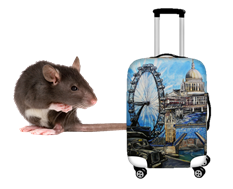 Rats and other pests are a common sight on railway tracks and platforms but having them as your travel companion is an unwanted experience. There are many instances for pests found in railway coaches and compartments and the pests are always spotted sooner or later.
Rats and other pests are a common sight on railway tracks and platforms but having them as your travel companion is an unwanted experience. There are many instances for pests found in railway coaches and compartments and the pests are always spotted sooner or later. Prateek Badvelkar and his family were travelling from Nasik to Bhopal in AC 2 coach of Udyognagri Express on July 29. This definitely was not a journey but a nightmare for the family as they faced a torrid time dealing with the bed bugs.
Prateek Badvelkar and his family were travelling from Nasik to Bhopal in AC 2 coach of Udyognagri Express on July 29. This definitely was not a journey but a nightmare for the family as they faced a torrid time dealing with the bed bugs. 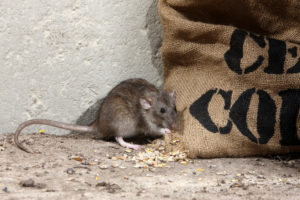 A country where starvation deaths and undernourished children fail to wake up the government from a deep slumber, a minute wastage of foodgrain is a crime. However, the awful condition in which the warehouses are maintained is a sign of why there is a massive wastage of foodgrain in the country.
A country where starvation deaths and undernourished children fail to wake up the government from a deep slumber, a minute wastage of foodgrain is a crime. However, the awful condition in which the warehouses are maintained is a sign of why there is a massive wastage of foodgrain in the country. It is surprising that many are unknown to a rodent called vole which is so widespread and poses a huge potential of causing an extensive damage to trees, lawns and gardens. They have even managed to put the blame for their destructive acts on moles, which do not even eat plants as voles do!
It is surprising that many are unknown to a rodent called vole which is so widespread and poses a huge potential of causing an extensive damage to trees, lawns and gardens. They have even managed to put the blame for their destructive acts on moles, which do not even eat plants as voles do!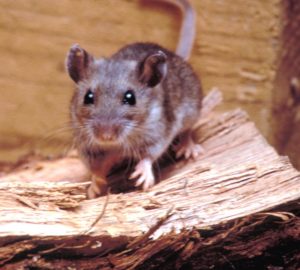 Excellent hearings, vision, smell and touch have enabled the house mouse to be highly adaptable to homes and indoor buildings. All they need is a 1/4″ opening to be able to enter a house, so they often have access to many places along the house’s perimeter.
Excellent hearings, vision, smell and touch have enabled the house mouse to be highly adaptable to homes and indoor buildings. All they need is a 1/4″ opening to be able to enter a house, so they often have access to many places along the house’s perimeter. House mice aren’t just a nuisance but a potential source of infections, say researchers who trapped and tested more than 400 of the rodents from apartments across New York City.
House mice aren’t just a nuisance but a potential source of infections, say researchers who trapped and tested more than 400 of the rodents from apartments across New York City.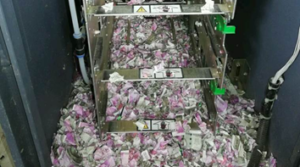
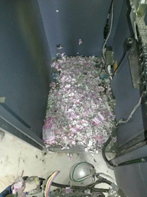
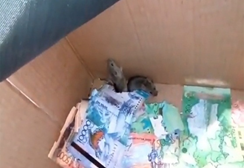 A pair of mice snuck into an ATM in the Kazakh capital Astana, hiding from a snow storm. Bank workers were surprised when they discovered the tiny intruders and the ruined notes they had munched on during their stay.
A pair of mice snuck into an ATM in the Kazakh capital Astana, hiding from a snow storm. Bank workers were surprised when they discovered the tiny intruders and the ruined notes they had munched on during their stay. Have you recently found shavings of wood, clothes going torn, cables losing their insulation or holes in your walls at home?
Have you recently found shavings of wood, clothes going torn, cables losing their insulation or holes in your walls at home?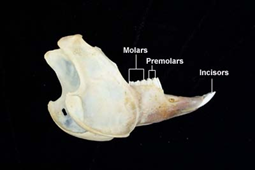 Most species have up to 22 teeth with no canines or anterior
Most species have up to 22 teeth with no canines or anterior